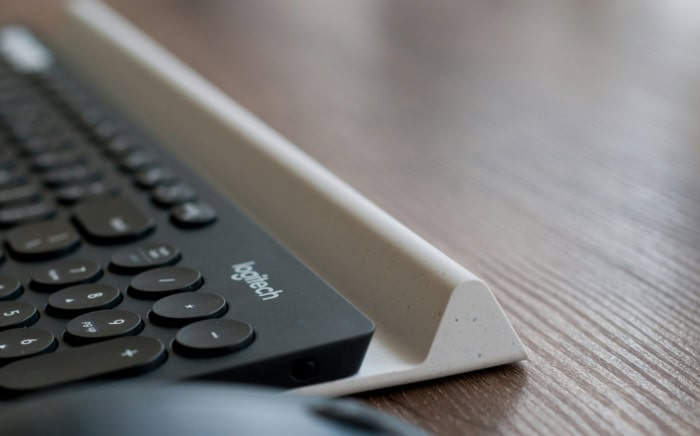Gaming Keyboards vs. Regular Keyboards: Beyond the Keys

Choosing the right keyboard can greatly enhance the way we interact with computers, especially with the rise of gaming peripherals designed to cater to specific user demands. Gaming keyboards, known for their advanced technology and striking designs, have gained immense popularity among gamers and tech enthusiasts alike.
Their features set them apart from regular keyboards, offering more than just a tool for typing.
Key Differences in Design and Build Quality
The design and build quality of a keyboard play a significant role in its performance and longevity. Gaming keyboards and regular keyboards differ greatly in their construction and features, reflecting the unique demands of their respective audiences.
Gaming keyboards prioritize precision, durability, and aesthetics, catering to intense gaming sessions, while regular keyboards are designed for simplicity and general utility.
Mechanical vs. Membrane Switches
One of the most noticeable distinctions lies in the type of switches used. Gaming keyboards predominantly feature mechanical switches, which utilize individual mechanical components for each key.
These switches provide a satisfying tactile or clicky feedback whenever a key is pressed, enhancing the typing or gaming experience. They also require a consistent actuation force, meaning you don't need to bottom out the key for it to register.
This precision can be critical in fast-paced gaming scenarios where split-second reactions matter. Moreover, mechanical switches are highly durable, with many rated for tens of millions of keystrokes, ensuring long-term reliability.
Regular keyboards, on the other hand, typically rely on membrane switches. These switches use a pressure pad system where a keypress presses down on a rubber dome to make contact with circuits.
While membrane keyboards are quieter and more affordable, they lack the tactile feedback and responsiveness of their mechanical counterparts. Additionally, membrane switches tend to wear out faster and may lose their consistency over time, making them less ideal for heavy use.
Aesthetic Features
Gaming keyboards also excel in the visual department. Many models are equipped with customizable RGB lighting, allowing users to personalize their keyboard with vibrant colors and effects.
Some even offer per-key lighting, letting users highlight specific keys for gaming or productivity purposes. These aesthetic options not only make the keyboard more visually appealing but also improve visibility in dimly lit environments, which can be a practical advantage during late-night gaming sessions.
In contrast, regular keyboards usually adopt a more understated appearance. They often feature a plain design with minimal or no lighting, reflecting their utilitarian focus.
Though simpler, these designs work well for office environments or situations where flashy aesthetics are unnecessary. However, for users who enjoy personalizing their setup or creating an immersive atmosphere, the visual appeal of gaming keyboards can significantly enhance overall enjoyment.
Materials and Durability
The materials used in gaming keyboards are another area where they stand out. Manufacturers often use high-quality materials, such as metal frames and durable PBT keycaps, to ensure the keyboard can withstand intense use.
PBT keycaps, in particular, resist wear and shine caused by repeated typing, making them a preferred choice among gamers and enthusiasts. Additionally, many gaming keyboards feature braided cables and reinforced connectors, further improving their longevity.
Regular keyboards, by comparison, are typically made with lighter, less durable materials like ABS plastic keycaps and plastic frames. While this contributes to their affordability and lighter build, it also makes them less robust.
Over time, the keys on regular keyboards can become shiny, fade, or feel loose due to wear. For users who don’t demand rigorous performance or extended durability, this may not pose a significant issue.
However, those looking for a keyboard that lasts through years of heavy use may find gaming keyboards to be a better investment.
Performance and Functionality

A keyboard’s performance and functionality play a significant role in how well it meets the needs of specific users. Gaming keyboards and regular keyboards differ greatly in this area, as gaming keyboards are engineered for precision, speed, and versatility, while regular keyboards often focus on fulfilling everyday typing tasks without extra flair.
Response Time and Input Accuracy
Gaming keyboards are specifically engineered to deliver lightning-fast response times and unmatched input accuracy. In fast-paced games, a fraction of a second can mean the difference between victory and defeat.
Many gaming keyboards use advanced technologies, such as mechanical switches and optimized circuitry, to minimize input lag and ensure that every keystroke is registered without delay. For gamers who rely on quick reflexes, this responsiveness can enhance performance and provide a competitive edge.
On the other hand, regular keyboards prioritize basic typing needs over speed. Their design focuses on everyday tasks like word processing and browsing.
While they are sufficient for casual use, their slower response times and less precise input registration may not meet the demands of competitive gaming or tasks requiring rapid keystrokes. For someone typing at a leisurely pace, these limitations might go unnoticed, but to gamers or professionals who depend on accuracy and speed, the difference is significant.
Anti-Ghosting and N-Key Rollover
Anti-ghosting and N-key rollover are standout features in gaming keyboards, designed to ensure that multiple simultaneous key presses are accurately registered. Anti-ghosting prevents unintended keystrokes from being registered when pressing multiple keys at the same time, while N-key rollover allows the keyboard to detect and process an unlimited number of key presses simultaneously.
For complex gaming commands or advanced typing tasks, these features are invaluable, as they allow users to execute intricate inputs without missing a beat.
Regular keyboards, in comparison, often lack these features or offer limited versions of them. Most standard keyboards can accurately register only a few simultaneous key presses before they encounter issues, such as missed inputs or ghosting.
This limitation might not affect casual typing or simple tasks, but for gamers or users who rely on precise multi-key inputs, it can become a frustrating drawback.
Programmable Keys and Macros
Another feature that sets gaming keyboards apart is the inclusion of programmable keys and macro functionality. Many models allow users to assign custom commands or multi-step macros to specific keys, streamlining complex actions into a single keystroke.
Gamers often use this functionality to enhance gameplay by binding in-game actions to easily accessible keys, while professionals can use it to automate repetitive tasks, improving productivity.
Regular keyboards, on the other hand, rarely include programmable keys or macro support. Their design is tailored for general use, where advanced customization is not typically a priority.
While this simplicity works well for basic tasks, users seeking more control and efficiency in their workflow or gaming sessions may feel limited by the lack of programmability.
Comfort and Ergonomics

Comfort plays a crucial role in enhancing the user experience, especially during extended periods of use. Gaming keyboards are built with ergonomics in mind, designed to reduce strain and provide a more comfortable experience during long gaming sessions.
In contrast, regular keyboards often prioritize simplicity, which may lead to compromises in ergonomic support.
Ergonomic Design Features
Gaming keyboards often come equipped with features that contribute to a more comfortable and user-friendly experience. Many models include detachable or built-in wrist rests, which provide support to the wrists and help reduce strain during extended use.
Adjustable legs or height settings allow users to change the typing angle, accommodating different preferences and helping to promote a more natural hand position. Additionally, some gaming keyboards feature contoured or sculpted keycaps that match the natural curvature of fingers, making each keystroke feel smoother and more intuitive.
Regular keyboards, in comparison, usually follow a simpler design that lacks advanced ergonomic features. While some might include basic height adjustments, features like wrist rests or specialized keycaps are less common.
This straightforward approach can be sufficient for occasional use or short typing sessions but may not provide the same level of comfort for prolonged activity. Over time, the lack of ergonomic support could result in hand or wrist fatigue, especially for those who spend several hours typing or gaming.
Long-Term Usability
Gaming keyboards are specifically designed to handle extended periods of use, catering to gamers who often engage in long gaming sessions. The materials, build quality, and ergonomic enhancements ensure that users remain comfortable even after hours of continuous use.
Features like tactile feedback and responsive switches not only improve performance but also reduce the effort required for repeated keystrokes, further enhancing long-term comfort.
Regular keyboards, while functional and practical, may not be as well-suited for prolonged use. Their minimalist design and lack of ergonomic features like wrist support can lead to discomfort over time.
For casual or light tasks, standard keyboards perform adequately, but for extended typing or gaming, they might fail to provide the necessary comfort and durability. Users who spend significant time at their keyboards may find gaming models to be a more suitable and comfortable option in the long run.
Through their thoughtful ergonomic design and attention to long-term usability, gaming keyboards cater to the needs of users who prioritize comfort and endurance during extended use. While regular keyboards fulfill basic requirements, their limited features may not support the same level of sustained comfort.
Cost vs. Value

Cost often becomes a decisive factor when choosing between gaming keyboards and regular keyboards. While gaming keyboards generally come with a higher price tag, the advanced features and superior materials justify the expense for certain users.
On the other hand, regular keyboards offer an affordable alternative for those who only need basic functionality.
Price Comparison
Gaming keyboards tend to be significantly more expensive than regular keyboards, with entry-level models starting at moderate prices and high-end options reaching well into premium territory. The cost is driven by several factors, including the use of mechanical switches, advanced features like RGB lighting and programmability, and high-quality materials such as metal frames and PBT keycaps.
Additionally, many gaming keyboards feature proprietary technologies or customization software, further adding to their value and price.
Regular keyboards, in contrast, are often designed with affordability in mind. Most options are built with membrane switches and simpler materials, such as ABS plastic and standard frames, which keep production costs low.
This makes regular keyboards ideal for users who require an economically priced device for everyday typing or light usage. However, the lower price often comes at the expense of advanced features and long-term durability.
Evaluating Value for Different Users
For competitive gamers and heavy users, investing in a gaming keyboard can provide excellent value. Features like fast response times, anti-ghosting, N-key rollover, and ergonomic designs contribute to improved performance and comfort, especially during extended gaming sessions or demanding tasks.
The durability of mechanical switches and premium materials also ensures that the investment lasts for years, making gaming keyboards a worthwhile choice for users who demand high performance and reliability.
In contrast, a regular keyboard might be sufficient for those who only need a device for casual use or simple office work. Tasks like typing documents, browsing the internet, or light gaming can easily be accomplished without the added cost of advanced features.
A regular keyboard offers practicality and value for users who prioritize affordability over performance or customization. Choosing this option is particularly sensible for those who don’t require features such as programmable keys, RGB lighting, or mechanical switches.
Conclusion
Gaming keyboards and regular keyboards differ significantly in design, performance, ergonomics, and cost, catering to distinct user needs and preferences. Gaming keyboards stand out with their mechanical switches, vibrant RGB lighting, durable materials, advanced features like anti-ghosting and programmable keys, and ergonomic enhancements such as wrist rests and contoured keycaps.
These elements make them ideal for gamers and heavy users who value precision, speed, customization, and comfort during prolonged use.
Regular keyboards, on the other hand, offer simplicity and practicality for everyday tasks, prioritizing affordability and basic functionality. Though they lack advanced features, they remain suitable for casual users or office work, effectively meeting the needs of those who don’t require high-end options.
The choice between a gaming keyboard and a regular one ultimately comes down to personal requirements and budget considerations.


